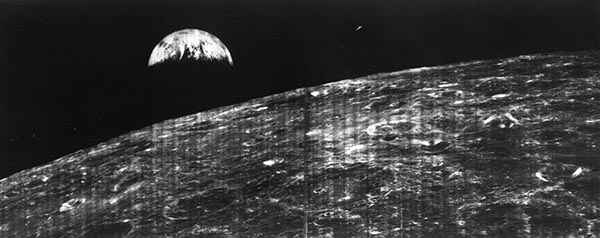
Publish and Perish
It’s an old story. A sad story, but an old story. Someone founds a highly influential and successful technology magazine (in print) and eventually technology itself kills off the magazine that promoted it. How many of you remember Byte magazine? PC? Macworld? Many of the doorstop-thick technology magazines of the 1980s and 1990s are gone, replaced by Internet news sites and editorial budgets a fraction of those of the print editions.
Via The Guardian, and an article written by the magazine’s founder, the latest casualty is a magazine called Sound & Vision.
Sound & Vision once commanded respect. Sony, Netflix, even 60 Minutes all visited the magazine’s 45th floor offices north of Times Square. Apple hand-delivered its first iPod to the magazine to get the opinion of technical editors before the company had even announced the game-changing product. I had the good fortune to jog around the Central Park Reservoir with a thousand tunes in my pocket when people were still carrying cassette players and radios.
The company that currently owns the magazine has pulled the plug on the print edition, which will be discontinued after the October/November issue. The online edition will continue.
In a statement, Sound & Vision’s editor, Mark Henninger, said: “Shifting Sound & Vision to a digital-only format is about more than just adapting – it’s about thriving. Our readers demand immediacy and convenience, and this move lets us deliver the high-quality content they expect without the delays and limitations of print. While we’re proud of our print legacy, it’s time to embrace the future and ensure that Sound & Vision remains at the forefront of the industry, right where our audience needs us.”
Sound & Vision was born in 1999 from the combination of Stereo Review (to which we subscribed in the 1980s) and the newer Video. The magazine was retooled to take advantage of the growing “home theater” boom.
Issues regularly exceeded 178 pages, sometimes reaching 200, with lots of full-page advertising bought by the major consumer electronics companies in anticipation that Americans would replace their conventional cathode ray tubes with high-definition televisions and flat screens.
But we can guess how this went.
Unfortunately, even magazines about technology were not immune from the dramatic shift from print to pixels. S&V’s most recent issue, August/September, contained 76 pages, including only 12 full pages of advertising. Through the screen-based distributor Zinio, S&V made facsimiles of its print pages available for download on phones and tablets for those willing to pay another subscription. But much of the content appeared for free on soundandvision.com after it had appeared in print. A magazine priced at the newsstand for $7.99 a copy could hardly compete with the same publisher’s free content. Besides, finding a newsstand carrying actual magazines had become nearly impossible.
Indeed.
Onion Roles
Well, OK, maybe print publishing isn’t dead. And while this is not a headline from The Onion, it’s actually about The Onion. From the New York Times:
No Joke: The Onion Thinks Print Is the Future of Media
Some of us did regularly pick up the print edition in the 1990s.
This week, The Onion began distributing a print edition for the first time in more than a decade and will soon deliver it monthly to everyone who subscribes to its site. The move is a throwback to the publication’s roots as a campus weekly in the late 1980s.
The print edition is designed to be a “perk” to appeal to subscribers of its digital content ($5 a month—yes, we just subscribed).
The company plans to offer invites to live events, access to The Onion’s archive of physical papers and sponsorship of ambitious editorial projects, such as a video titled “The Perfect One-Pot, Six-Pan, 10-Wok, 25-Baking-Sheet Dinner,” Mr. Collins said.
Actually, our introduction to The Onion was by randomly coming across the Onion book Our Dumb Century, one of the funniest and most brilliant books ever published, in a bookstore circa 1999 or so. (It is now online and remains as funny as it was 25 years ago.)
Mr. LaFlure said he hoped the print newspaper would reach a younger generation of consumers who had already begun to show some affinity for analog substitutes of digital products.
“I think for the same reason that 18-year-old kids are buying Taylor Swift on vinyl,” Mr. LaFlure said, “we can introduce those same kids to the notion that a print publication is a much richer way to consume media.”
Let’s hope the gambit pays off.
Judging a Book By Its Cover Chemicals
When we think about “dangerous books,” we usually think about the ideas they contain as being dangerous, at least to some people. But actually certain books pose another kind of danger: it turns out that books produced in the Victorian era contained toxic dyes and other materials. Says Ars Technica:
In April, the National Library of France removed four 19th century books, all published in Great Britain, from its shelves because the covers were likely laced with arsenic. The books have been placed in quarantine for further analysis to determine exactly how much arsenic is present. It's part of an ongoing global effort to test cloth-bound books from the 19th and early 20th centuries because of the common practice of using toxic dyes during that period.
Wasn’t something like this a major plot point in Umberto Eco’s Name of the Rose?
There is also an ongoing initiative at the University of Delaware called the Poison Book Project that was launched to analyze all the Victorian-era books in the Winterthur Museum’s book collection. Initially, they were looking for an arsenic compound called cooper acetoarsenite, an emerald green pigment that was very popular at the time and used to dye wallpaper, clothing, and book covers. They also found book covers dyed with chrome yellow (lead chromate) and the project’s scope was expanded.
The Poison Book Project is ongoing, but 50 percent of the 19th century cloth-case bindings tested so far contain lead in the cloth across a range of colors, as well as other highly toxic heavy metals: arsenic, chromium, and mercury.
… Levels were especially high in those bindings that contain chrome yellow. However, the project researchers also determined that, for the moment at least, the chromium and lead in chrome yellow dyed book covers are still bound to the cloth. The emerald green pigment, on the other hand, is highly "friable," meaning that the particles break apart under even small amounts of stress or friction, like rubbing or brushing up against the surface—and that pigment dust is hazardous to human health, particularly if inhaled.
So if you’re handling books from this era, be sure to wear gloves.
Juiced
Here’s something that we found surprising: glass bottles are not the most sustainable option for beverages like juice. Researchers from the University of Amherst recently published a study called, “Unpacking Consumer Preferences: Perceptions and Sustainability of Packaging Material for Orange Juice,” which ran in the journal Sustainability. While they acknowledge that consumers tend to think of glass as the most sustainable packaging option, if you look at its overall life cycle, other materials actually have the upper hand. Says Food & Wine:
The team discovered this anomaly after it followed the packaging cycle of glass, carton, aluminum, and plastic, finding that though the sustainability of food packaging varies by the type of product, its size and weight, and several other variables, for single-serve orange juice, the carton is king. In fact, the study ranked plastic in second, followed by canned, and finally, glass in dead last.
Last? But why?
the team found that the production and “end-of-life impacts of plastic” are less than that of glass as “plastic is lighter and thus requires less energy to transport.” Additionally, the study noted, “the aseptic sealing process of plastic containers using steam is less energy demanding than the retort system used for glass.”
… While the study aimed to understand consumer motivation in terms of packing choices, the paper concluded, “Overall, while packaging choices contribute to environmental outcomes, the most impactful and practical way consumers can contribute to sustainability efforts is to reduce or avoid food waste."
So instead of buying orange juice, buy oranges and squeeze your own—and then eat the detritus.
People in Glass Hotels Throw Stones
This is from the “what were you expecting?” file. From Boing Boing, the world’s most obvious headline: “Couple complains they felt ‘completely vulnerable’ during stay in all-glass hotel room.”
Margaret and Corey Bienert were excited for a free overnight stay in a very special room at the Paradiso Ibiza Art Hotel. The “Zero Suite” is entirely glass and located in the lobby of the hotel.
“We found out the lights never turn off and you’re basically on display all night long,” Margaret Bienert said.
Well, duh! There’s a reason people don’t live in aquaria.
Inside the Music
Take a guess as to what this might be:

A still from a Fritz Lang movie maybe?
Actually, via Core 77, it is the inside of the 1882 pipe organ at St. Marks Church in New Zealand.
And it wasn't shot in a single take; Brooks uses surgical lenses connected to high-resolution cameras, and this image is the result of painstakingly stitching together 62 shots of differing focal lengths.
The organ is just one example of Brooks’ Architecture in Music series. This is a cello:

Check out more here.
Sadly, Brooks’ studio was demolished in a flood, so to help fund his relocation, he is selling prints at a 33% discount.
Graphene In 3D
Was it a good week for graphene news? It’s always a good week for graphene news! Graphene-based 3D printing to be used in home construction. From (who else?) Graphene-Info:
Versarien has announce that the Company has entered into a contract with Building For Humanity for Versarien to act as a ‘print partner’ to support Building For Humanity CIC, a community interest company, with a range of services for its flagship Charter Street project in Accrington, Lancashire. The contract, initially valued at approximately £200,000 will see Versarien providing 3D construction printing (“3DCP”) input at all stages of the project, giving Building For Humanity a full service from design to construction.
… Dr. Stephen Hodge, CEO of Versarien, commented: "We are delighted to be supporting Building For Humanity's Charter Street project using innovative 3DCP technology. This initiative is the first 3D housing construction project in the UK and one ideally suited to the services we can provide. This project is a pivotal opportunity to showcase Versarien's capabilities in enabling low-carbon, efficient construction solutions, exemplifying our commitment to innovation and sustainability."
Keeping Up with The Jonesing
Have you ever wondered where the word “jonesing” came from (as in craving something)? No, nor have we. But if you’re jonesing for an answer, via Laughing Squid, Nigel Roxbury of New York City History Hub traces it to Great Jones Street, of the Bowery in New York’s East Village. While today is has some of the most expensive real estate in the city, back in the 1960s and 70s is was a very seedy neighborhood and largely home to addicts of various kinds. Folks looking for a fix used the term “jonesin’” to refer to finding said fix on Great Jones Street.
Nowadays it would probably refer to looking to head to an upscale fashion boutique or art museum.
See also the early and not-especially-good Don DeLillo novel Great Jones Street.
Plane Facts
Here’s a trivia question: who was the first President to fly on Air Force One? That’s not to be confused with who was the first President to fly in an airplane (Teddy Roosevelt in 1910) or who was the first President to fly in an airplane while in office (Franklin Roosevelt in 1933 whose Douglas Dolphin was the first aircraft to be used for Presidential travel). The US Air Force itself wasn’t actually created until 1947, via the National Security Act of 1947—and President Harry S Truman signed it while actually on a plane. The first President to have an aircraft officially designated as “Air Force One” was Dwight Eisenhower. One of several Lockheed C-121 Constellations used by Ike was named Columbine II. Says Wikipedia:
Columbine II is the first plane to bear the call sign Air Force One. This designation for the US Air Force aircraft carrying the incumbent president was established after an incident in 1954, when Eastern Air Lines 8610, a commercial flight, crossed paths with Air Force 8610, which was carrying President Eisenhower. Initially used informally, the designation became official in 1962.

We mention this because, via Atlas Obscura, the original Columbine II was replaced as the Presidential aircraft in 1959, was used as a commercial aircraft for a time, then apparently abandoned, where it languished in the Arizona desert for 60 years.
How did Columbine II wind up abandoned in the desert? “The short answer is, it got lost,” says Veronico. By 1968, the plane’s presidential paint job and lux accouterments were long gone. That combined with what was likely a clerical error during inventory obscured its predigious pedigree.
“Predigious”? Anyway, enter Karl Stoltzfus, former C.E.O. of the aircraft maintenance company Dynamic Aviation, tracked down the plane after reading a local news story about it.
“Storage fees were adding up and the owner threatened to scrap it,” says Stoltzfus. “It was unbearable to think that a priceless piece of American history might be turned into beer cans.”
He bought it for $1.5 million and began the process of restoring it. It is actually now flightworthy, if not a little nerve-wracking. In fact, we would not be surprised if Southwest started using it.

“Karl believed Columbine II could serve as a powerful symbol that reached across generations and reminded us of where we came from and what we stand for,” says Douglas. “It was his dream to bring this plane back to life and we’re determined to make that happen.”
Regardless, Don’t Cry Over It
Have you ever asked, can thunderstorms spoil milk? And not by knocking out the power for several days and the milk going bad in the fridge; no, the actual presence of a storm turning sweet milk sour. Sounds like a crazy question to ask, but back in the pre-refrigerator era (i.e., almost all of human history), this was an actual observation by dairy men and women. Via Atlas Obscura:
it was once widely believed In both Europe and North America that thunderstorms could cause fresh milk to curdle, especially in summer. “At the time when it thunders, Beer, Milk, etc. turn sower [sour] in the Cellars,” Flemish alchemist Franciscus Mercurius van Helmont wrote in 1685. “The Thunder doth everywhere introduce corruption and putrefaction.”
For centuries, scientists accepted the fact that it happened and proposed all sorts of possible yet unsatisfactory explanations—perhaps it was due to lower barometric pressure of the atmosphere; maybe lightning produces “a poison called nitric acid” that seeps into milk and curdles it; maybe it was the presence of ozone that did…something. Experiments involving passing a current through milk failed to cause any curdling, so electricity was ruled out. Everyone was at a loss. But, as people started to learn more about microbiology, bacteria was thought to be the culprit.
The first scientist to posit bacteria as the real connection between storms and spoiled milk may have been Aaron L. Treadwell, whose own experiment was described in Science in 1891. If some chemical or charge in a stormy sky were the cause of sour milk, Treadwell reasoned that it should affect sterilized and unsterilized milk equally. However, he found that after exposure to simulated storm conditions, pasteurized milk curdled less than raw milk fresh from the cow. “It seems to me most likely,” Treadwell wrote, “that whatever rapid souring occurs is due to an unusually rapid growth of bacteria, caused by especially favorable conditions of the atmosphere.”
Other researchers pursued the bacteria angle.
By 1927, Edward Holyoke Farrington was presenting this explanation as a matter of fact in A Guide to Quality in Dairy Products, published by the University of Wisconsin. “A thick, sultry atmosphere usually precedes thunder showers and provides favorable conditions for the growth of milk-souring bacteria,” Farrington wrote.
Interestingly, Treadwell’s and Farrington’s conclusions are still believed to be the case today, at least according to a 2020 study published in the German journal Chemistry in Our Time. Not everyone is convinced. But one reason we may think it is a silly question in the first place is that we have little experience with unpasteurized milk.
The belief that thunder curdles milk still persists in some rural areas where raw milk is consumed, especially among older generations. (A recent discussion of the topic on Reddit was entitled “What was my grandma talking about?”) Before people had access to refrigeration or knew about microbes, the proliferation of bacteria in unsterilized milk pails during a humid summer storm seemed mystical.
Well, it used to.
Stream Mor Chikin
Well, this is…interesting. Chick-fil-A—the fast food chain—is apparently launching a streaming service, for some reason. The emphasis is going to be on “family friendly” programming, so there will be no fowl language. Says Ars Technica:
Chick-fil-A is reportedly particularly interested in unscripted shows. The poultry restaurant chain has a budget “in the range of $400,000 per half-hour” for unscripted content, Deadline said. Chick-fil-A is already looking to license an unnamed “family-friendly game show” from the production company that makes The Wall, a Chris Hardwick-hosted trivia game show that airs on NBC, per Deadline.
That’s a poultry excuse for a programming schedule.
A fast-food company entering the video-streaming business is an unusual development. Food delivery companies, like Grubhub and DoorDash, have been peddling bundled streaming packages in combination with their own services. But a company known for fried chicken looking to launch an original hit on its own streaming service is a new one for the streaming industry.
On the plus side, they probably won’t be showing Good Burger.
Snap, Crackle, and Sleep
Do you like Rice Krispies Treats? Would you base your entire interior décor on a Rice Krispies Treat theme? Well, yes and no (in that order). But if you find yourself on Cape Cod at the Red Jacket Beach Resort, you can stay in the Re-Treat Suite, a room themed around RKTs. Says (who else?) Food & Wine:
The Re-Treat Suite…is an “immersive takeover of a charming suite inspired by our classic snack and the nostalgia of summertime sleepovers, bringing fans inside the delicious world of Rice Krispies Treats.”

And, interestingly, it’s free.
The only caveat here is that families need to be quick with their booking fingers. There are only five, two-night, three-day stays available in the suite now through the end of August. Those interested can get one by visiting RiceKrispiesTreatsReTreat.com. (The suite can fit up to six guests, so make your list of who else you'd like to invite along for the fun after you book.)
Or to blackmail you.
Act fast: booking ends at the end of August.
This Week in Printing, Publishing, and Media History
August 19
1631: English poet, literary critic, and playwright John Dryden born.
1646: English astronomer and academic John Flamsteed born.
1662: French mathematician, physicist, and philosopher Blaise Pascal dies (b. 1623).
1839: The French government announces that Louis Daguerre’s photographic process is a gift “free to the world.”
1906: American inventor (the Fusor) Philo Farnsworth born.
1921: Star Trek creator Gene Roddenberry born.
1939: English drummer and songwriter Ginger Baker born.
1964: Syncom 3, the first geostationary communication satellite, was launched.
1977: American comedian and actor Groucho Marx dies (b. 1890).
August 20
1858: Charles Darwin first publishes his theory of evolution through natural selection in The Journal of the Proceedings of the Linnean Society of London, alongside Alfred Russel Wallace’s same theory.
1882: Tchaikovsky’s 1812 Overture debuts in Moscow, Russia.
1890: American short story writer, editor, novelist H. P. Lovecraft born.
1920: The first commercial radio station, 8MK (now WWJ), begins operations in Detroit.
1926: Japan’s public broadcasting company, Nippon H?s? Ky?kai (NHK) is established.
August 21
1888: The first successful adding machine in the United States is patented by William Seward Burroughs.
1952: English singer-songwriter and guitarist Joe Strummer born.
1961: Motown releases what would be its first #1 hit (in America), “Please Mr. Postman” by The Marvelettes.
2005: American businessman, founded Moog Music Robert Moog dies (b. 1934).
August 22
1485: “A horse! My kingdom for a horse!” The Battle of Bosworth Field, the death of Richard III and the end of the House of Plantagenet.
1849: The first air raid in history. Austria launches pilotless balloons against the city of Venice.
1862: French pianist and composer Claude Debussy born.
1893: American poet, short story writer, critic, and satirist Dorothy Parker born.
1902: Theodore Roosevelt becomes the first President of the United States to make a public appearance in an automobile.
1920: American science fiction writer and screenwriter Ray Bradbury born.
1971: American singer-songwriter and guitarist Craig Finn born.
August 23
1946: English drummer, songwriter, and producer Keith Moon born.
1966: Lunar Orbiter 1 takes the first photograph of Earth from orbit around the Moon (not Keith).

1973: A bank robbery gone wrong in Stockholm, Sweden, turns into a hostage crisis; over the next five days the hostages begin to sympathize with their captors, leading to the term “Stockholm syndrome.” (Some trade shows are like that.)
1991: The World Wide Web is opened to the public.
August 24
1456: The printing of the Gutenberg Bible is completed.
1891: Thomas Edison patents the motion picture camera.
1995: Microsoft Windows 95 is released to the public in North America.
1998: First radio-frequency identification (RFID) human implantation is tested in the United Kingdom.
August 25
1609: Galileo Galilei demonstrates his first telescope to Venetian lawmakers.
1835: The first Great Moon Hoax article is published in The New York Sun, announcing the discovery of life and civilization on the Moon. (No one would ever fall for something like that today.)
1867: English physicist and chemist Michael Faraday dies (b. 1791).
1900: German philologist, philosopher, and critic Friedrich Nietzsche dies (b. 1844).
1954: English singer-songwriter, guitarist, and producer Elvis Costello (né Declan MacManus) born.
1991: Linus Torvalds announces the first version of what will become Linux.
2012: Voyager 1 spacecraft enters interstellar space becoming the first man-made object to do so.















Discussion
Only verified members can comment.